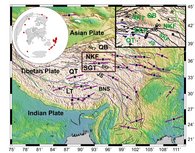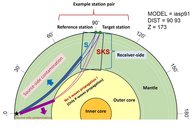Seismic Anisotropy


The use of body waves in quantifying seismic anisotropy
Summary
When mantle rocks are subject to large strain, the mineral grains of olivine and some other minerals align, causing the velocity of seismic waves passing though this material to vary as a function of direction of propagation and polarization (seismic anisotropy). By mapping seismic anisotropy we can thus put constraints on the past and present deformation in the upper mantle.
The main objective of the current project is to investigate seismic anisotropy within the upper mantle beneath various parts of the world by using an integrated approach where we combine different measures of anisotropy, which had been analyzed separately in most previous studies. We mainly analyze polarizations of body waves recorded during international passive seismic experiments. At the initial stage, we examine teleseismic observables recorded at the INDEPTH IV experiment at the northern margin of Tibet with significant participation of the GFZ Potsdam and their seismic pool. In particular, we use a comprehensive body wave analysis based on shear-waves splitting and P-polarization measurements. To be able to better sample the upper mantle, we develop the techniques which allow measuring receiver-side anisotropy from the polarization analysis of direct S-waves in addition to the core-mantle SKS phases in shear-splitting measurements by eliminating source-side anisotropy.
Body-wave anisotropic parameters later will be interpreted to retrieve the actual 3-D orientation of the anisotropic models of the upper mantle. The proposed project will improve our knowledge of the upper mantle structure and tectonic evolution of the Earth’s interior under different tectonic regimes.
Contact:
Prof. Dr. Frederik Tilmann (GFZ Potsdam)
Dr. Tuna Eken


